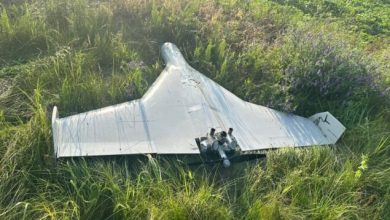Australian soldiers command robotic dog through brain waves

Australian Army soldiers recently demonstrated command of robotic dogs with brain waves.
The soldiers used a University of Technology Sydney (UTS)-developed console comprising HoloLens mixed reality smartglasses and a graphene biosensor to command a Ghost Robotics quadruped robot.
The Process
To execute commands, the user focuses on a white square out of a total of six flickering on his augmented reality lens at varying frequencies. The squares represent six predetermined locations where the robot can go.
A graphene biosensor on the back of the head then detects brainwaves from the visual cortex and signals an amplification circuit, which is translated into a command by an artificial intelligence decoder and given to the robot.
Frees Hands for Other Tasks
“The whole process is not difficult to master. It’s very intuitive. It only took a couple of sessions,” Sergeant Damian Robinson of the 5th Combat Service Support Battalion said.
“You don’t have to think anything specific to operate the robot, but you do need to focus on that flicker,” he said.
“It’s more of a visual concentration thing.”
Controlling a robot through one’s eyes rather than a hand-held console ensures “weapons readiness” and allows the hands to do other tasks.
Improving the Technology
Researchers at UTS and the army’s Robotic and Autonomous Implementation and Coordination Office have been working “to explore brain-computer interfaces and their tactical applications” since 2020.
UTS professors Chin-Teng Lin and Francesca Lacopi made several breakthroughs during the effort, such as “minimizing noise from the body and environment to get a clearer signal from an operator’s brain” and “increasing the number of commands the decoder can deliver in a fixed period.”
“We have nine different kinds of commands and the operator can select one from those nine within that time period,” Professor Lin said.
The Australian Department of Defence has provided 1.2 million Australian dollars ($870,000) to UTS for the project.





